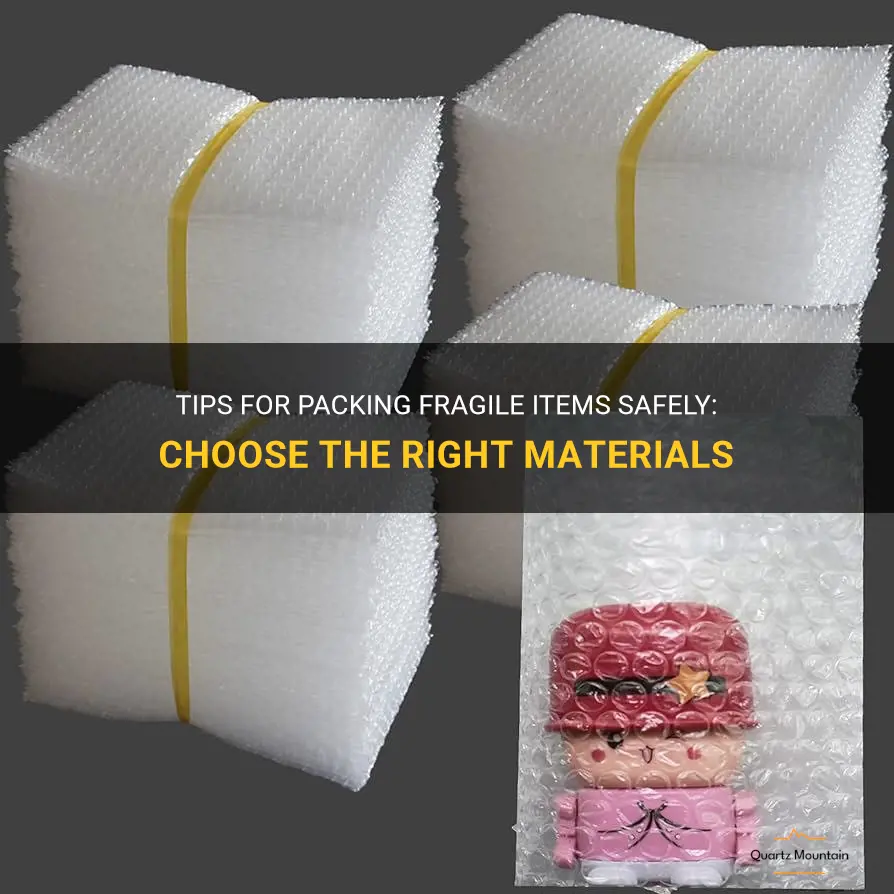
When it comes to moving or shipping fragile items, choosing the right materials for packing can make all the difference. Whether you're packing delicate china, valuable artwork, or sentimental keepsakes, using the proper materials can help ensure their safe arrival at their destination. In this article, we will explore some tips for packing fragile items safely and highlight the importance of selecting the right materials for the job. So, if you're planning a move or need to ship fragile items, take note of these tips to protect your precious belongings from any mishaps along the way.
What You'll Learn
- What are the best materials to use when packing fragile items?
- Are there specific packing techniques for different types of fragile items?
- Should I use bubble wrap or packing peanuts to protect delicate objects?
- Are there any eco-friendly alternatives to traditional packing materials for fragile items?
- What are the top brands or products recommended for packing fragile items securely?

What are the best materials to use when packing fragile items?
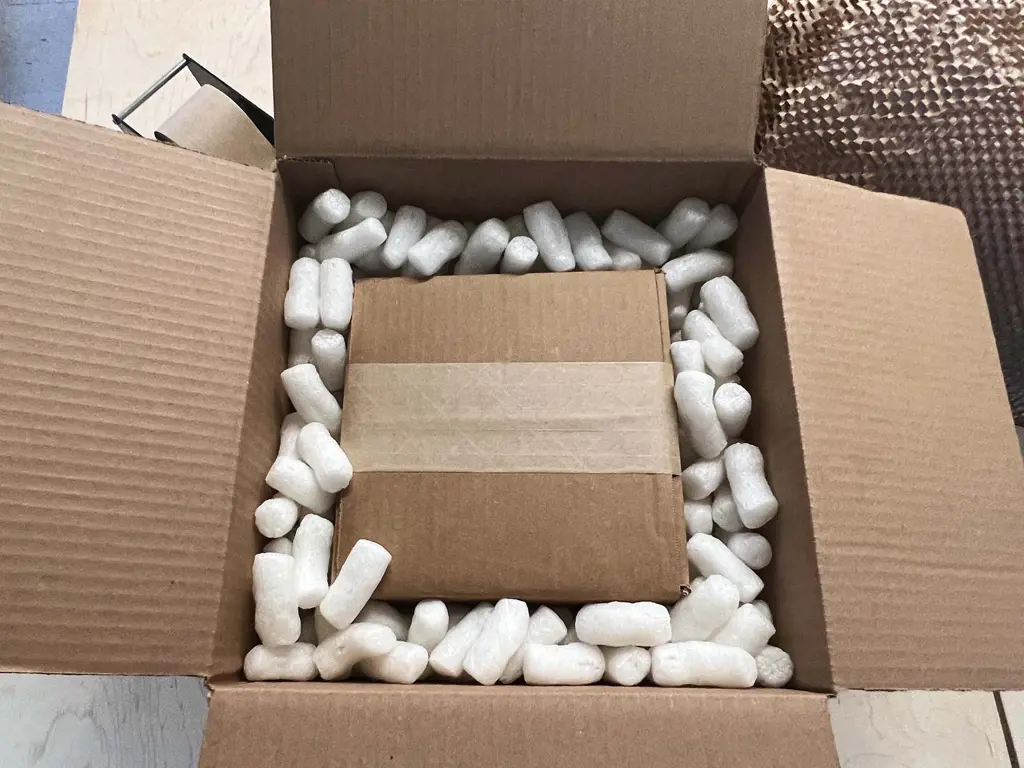
When it comes to packing fragile items, choosing the right materials is crucial to ensure their safe transportation. Fragile items, such as glassware, ceramics, or electronic devices, are susceptible to damage during handling and transportation. To protect these delicate items, here are some of the best materials you can use:
- Bubble Wrap: Bubble wrap is an excellent cushioning material for fragile items. It consists of small plastic bubbles filled with air that act as shock absorbers. Wrap the fragile item with several layers of bubble wrap, securing it with adhesive tape. This will provide an extra layer of protection against any impact or vibration during transportation.
- Packing Paper: Packing paper is another versatile material that is commonly used when packing fragile items. It provides a cushioning effect and helps prevent scratches and breakage. Crumple the paper to create a padded layer around the fragile item, ensuring that there are no gaps. This will help absorb any shocks and minimize movement during transportation.
- Foam Peanuts: Also known as packing peanuts, foam peanuts are lightweight and provide excellent cushioning. They can be poured into empty spaces in the packing box to fill any gaps and prevent movement of the fragile items. Make sure to use enough foam peanuts to create a secure and stable environment for the delicate items.
- Corrugated Cardboard: Corrugated cardboard is a strong and durable material that can be used to create protective layers for fragile items. Cut pieces of cardboard to match the size of the fragile item and sandwich it between the layers. This will provide added rigidity and protection against impacts. Additionally, you can also use corrugated cardboard dividers to separate individual fragile items and prevent them from coming into contact with each other.
- Air Pillows: Air pillows are inflatable plastic bags filled with air, which can be used for cushioning fragile items. Place the inflated air pillows strategically within the packing box to create a protective barrier around the items. This will help absorb any shock or impact and reduce the risk of damage.
- Styrofoam: Styrofoam is a lightweight material that provides excellent cushioning and insulation. It can be used to create custom-fit packaging for fragile items. Carve out a space in the styrofoam to securely hold the delicate item, ensuring a snug fit. This will protect the item from movement and provide maximum protection.
In addition to using the right materials, it is essential to pack fragile items properly. Here is a step-by-step guide to packing fragile items:
- Select a sturdy and appropriately sized box for the fragile item.
- Line the bottom of the box with a layer of foam peanuts or bubble wrap.
- Wrap the fragile item with bubble wrap or packing paper, ensuring complete coverage.
- Place the wrapped item in the box, making sure it is centered and does not touch the sides of the box.
- Fill any empty spaces with foam peanuts, air pillows, or crumpled packing paper to prevent movement.
- Add a layer of corrugated cardboard on top of the fragile item, followed by another layer of foam peanuts.
- Close the box and seal it with adhesive tape, reinforcing the corners and edges.
- Label the box as fragile and indicate the appropriate handling instructions.
Here are some examples of how to pack different fragile items:
- Glassware and ceramics: Wrap each piece individually with packing paper, securing it with tape. Place the wrapped items in the box, layering them with foam peanuts or crumpled packing paper to prevent contact.
- Electronic devices: Remove any batteries or detachable parts from the electronic device. Wrap the device with bubble wrap, ensuring all sides are well protected. Place the wrapped device in a box filled with foam peanuts or air pillows for added cushioning.
- Artwork and mirrors: Use foam corners to protect the corners of the artwork or mirror. Wrap the entire piece with bubble wrap and secure it with tape. Place the wrapped item in a box lined with a layer of foam peanuts or air pillows, ensuring there is no movement.
By using the right materials and following proper packing techniques, you can ensure the safe transportation of fragile items. Remember to handle the packed boxes with care and communicate the fragile nature of the contents to the transportation company or movers.
What to Pack for a May Trip to Miami: Essential Items and Tips
You may want to see also

Are there specific packing techniques for different types of fragile items?
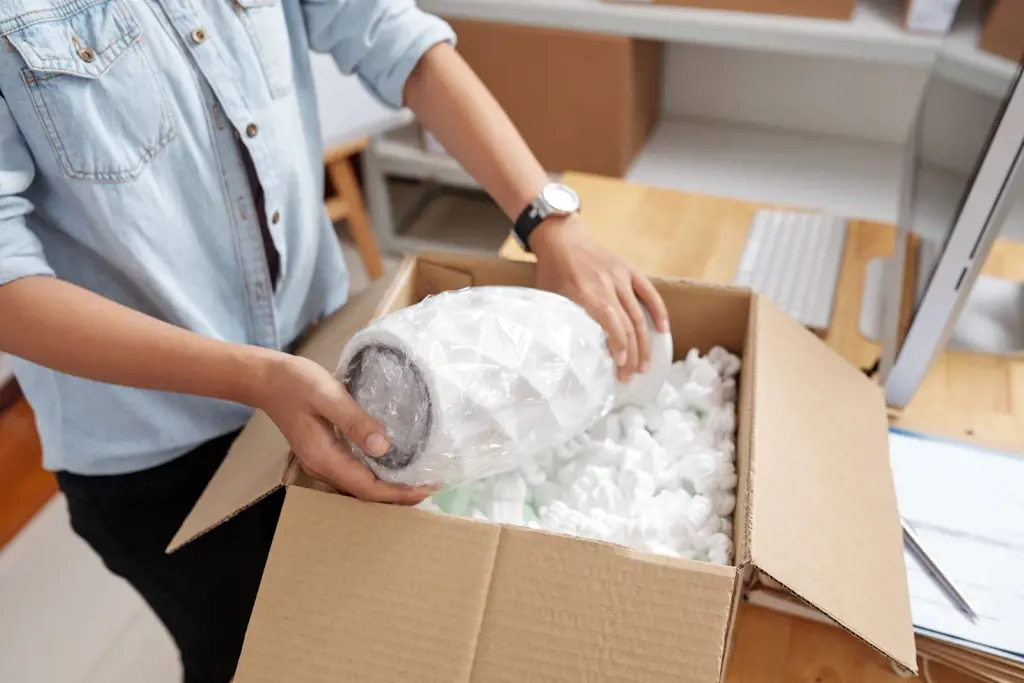
When it comes to packing fragile items, it is essential to take extra care to ensure they arrive at their destination intact. Different types of fragile items require specific packing techniques to prevent damage during transit. Whether you are packing delicate glassware or fragile electronic devices, here are some packing techniques to consider.
Glassware and Porcelain:
Glassware and porcelain items are prone to breakage due to their delicate nature. To pack them safely, start by wrapping each item individually in several layers of bubble wrap or packing paper. Secure each wrapped item with tape to prevent unwrapping during transit. Use dividers or cardboard inserts to separate each individual item within the box to prevent them from knocking into each other. Fill any empty spaces in the box with cushioning materials, such as packing peanuts or foam inserts, to provide additional protection.
Electronic Devices:
Electronics, such as laptops, tablets, and cameras, can be easily damaged during transportation. It is crucial to provide sufficient padding and protection. Before packing, remove any batteries and disconnect any removable parts. Wrap each component individually with anti-static bubble wrap or foam to prevent static electricity damage. Place the wrapped items in a sturdy box and fill the remaining space with packing peanuts or foam inserts. Ensure that the box is tightly sealed to prevent movement.
Artwork and Mirrors:
Artwork and mirrors should be handled with utmost care due to their fragility and value. Start by placing a layer of bubble wrap or foam at the bottom of a sturdy box. Wrap the artwork or mirror with bubble wrap, ensuring that all corners and edges are adequately protected. Secure the bubble wrap with tape. If the artwork has a glass cover, tape an "X" across the glass to reinforce it. Place the wrapped item in the box and fill any remaining space with packing peanuts or foam inserts to prevent movement.
Delicate Clothing:
Delicate clothing items, such as silk garments or dresses, require special care during packing to prevent wrinkling or damage. To protect these items, first, fold them neatly and place them in a clean garment bag or suit bag. If the clothing does not require hanging, wrap each item individually in acid-free tissue paper before placing them in a storage box. Ensure that the box is not overloaded, as excess weight can cause damage to the clothing.
Fragile Collectibles:
Fragile collectibles, such as figurines or ornaments, should be handled delicately to avoid any breakage. Start by wrapping each item individually with bubble wrap or packing paper. Secure the wrap with tape to keep it in place. Place the wrapped collectibles in a sturdy box, ensuring that there is enough space between each item. Fill any gaps with cushioning materials, such as packing peanuts or foam inserts. It is also advisable to label the box as "fragile" to alert the movers or handlers to exercise caution.
Remember to use boxes specifically designed for packing fragile items—their reinforced walls provide extra protection. Additionally, labeling each box as "fragile" can help ensure that it is handled with care throughout the transportation process. By following these specific packing techniques, you can increase the chances of your fragile items arriving undamaged at their destination.
Essential Items to Pack for an Unforgettable Cruise Vacation
You may want to see also

Should I use bubble wrap or packing peanuts to protect delicate objects?
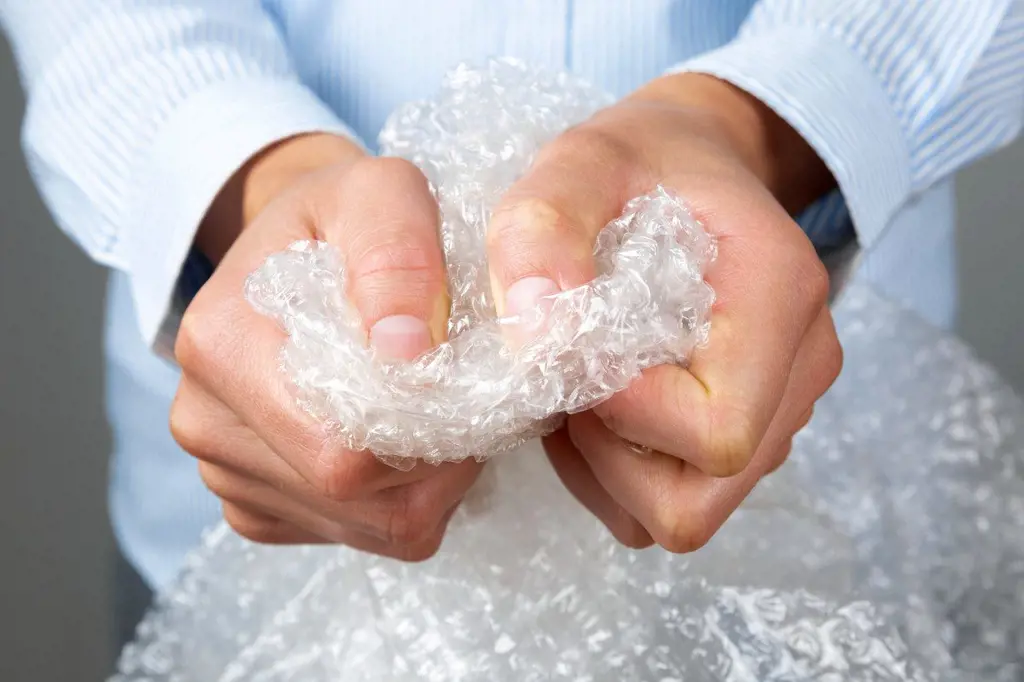
When it comes to packing delicate objects, one of the most important decisions you’ll have to make is whether to use bubble wrap or packing peanuts for protection. Both options have their pros and cons, and it ultimately depends on the specific item and your personal preferences. In this article, we will explore the benefits and drawbacks of each option to help you make an informed decision.
Bubble wrap is a popular choice for protecting delicate objects due to its cushioning capabilities. It is made of plastic sheets filled with air bubbles that provide excellent shock absorption. When you wrap an item with bubble wrap, the bubbles act as a barrier between the object and any external force that may be applied during transit.
The key advantage of bubble wrap is its ability to conform to the contours of the item being packed. This ensures that the object is securely wrapped and minimizes the risk of damage during handling. Bubble wrap is also lightweight, which can be beneficial for reducing shipping costs. Additionally, it is reusable and recyclable, making it an eco-friendly choice.
However, bubble wrap does have a few drawbacks. First, it can be bulky, which may require you to use larger boxes or additional packing materials. Second, while it provides excellent protection against external impacts, it may not offer the same level of insulation against temperature changes. Therefore, if you are shipping items that are sensitive to temperature fluctuations, you may need to consider additional insulation options.
On the other hand, packing peanuts are another common choice for protecting delicate objects. These small foam pieces fill the empty spaces in a box, providing support and cushioning to the items inside. Packing peanuts have the advantage of being lightweight, which can be beneficial for reducing shipping costs. They are also versatile and can be used for a wide range of items.
One key benefit of packing peanuts is their ability to provide insulation. The foam material helps to maintain a consistent temperature inside the box, which is beneficial for items that are sensitive to temperature changes. Packing peanuts are also non-abrasive, which makes them suitable for fragile items with delicate surfaces.
However, packing peanuts also have their disadvantages. First, they can be messy and time-consuming to use. If you are not careful, they can easily spill out of the box and create a mess. Additionally, packing peanuts are not as easily reusable or recyclable as bubble wrap, which may be a consideration for those concerned about the environment.
In conclusion, the decision between bubble wrap and packing peanuts ultimately depends on the specific object you are packing and your personal preferences. If you prioritize cushioning and conformability, bubble wrap may be the better option. On the other hand, if insulation and versatility are key factors, packing peanuts may be the more suitable choice. Remember to consider the specific needs of your item and to choose the most appropriate packing material to ensure its safe arrival.
Essential Items to Pack for a Memorable Glastonbury Experience
You may want to see also

Are there any eco-friendly alternatives to traditional packing materials for fragile items?
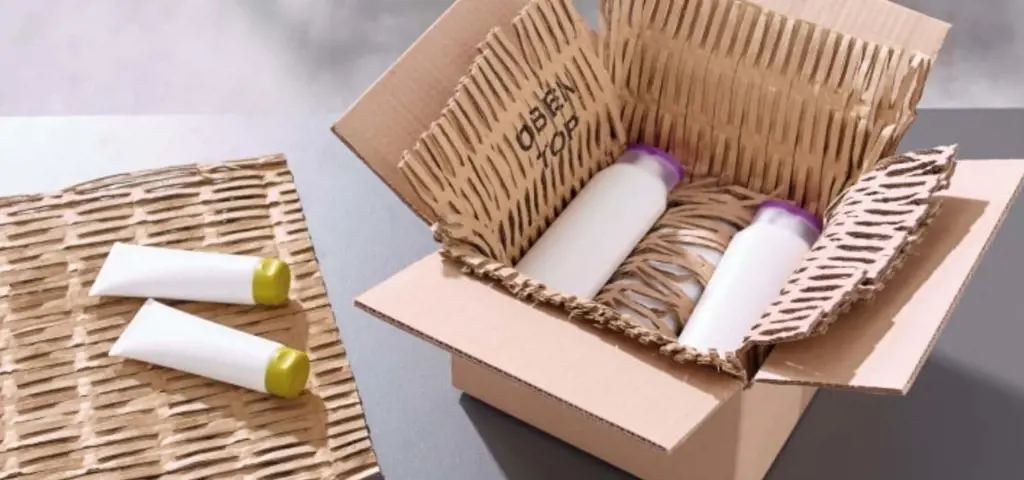
Eco-friendly Alternatives to Traditional Packing Materials for Fragile Items
When it comes to shipping or moving fragile items, traditional packing materials such as bubble wrap and Styrofoam peanuts have long been the go-to choices. However, with increasing concerns about environmental sustainability, many people are seeking eco-friendly alternatives to these materials. Fortunately, there are several options available that provide adequate protection while minimizing the negative impact on the planet.
One popular eco-friendly alternative to bubble wrap is recycled paper. Instead of using plastic-based materials, recycled paper offers a sustainable and biodegradable option for wrapping fragile items. When using recycled paper as packing material, it is important to crumple it up tightly to create a cushioning effect similar to bubble wrap. By using recycled paper, you can effectively protect your fragile items while reducing waste and promoting recycling.
Another eco-friendly option for protecting fragile items is using biodegradable packing peanuts. Unlike traditional Styrofoam peanuts, which are derived from non-renewable resources and take centuries to break down, biodegradable packing peanuts are made from starch-based materials that decompose naturally over time. These packing peanuts provide excellent shock absorption and can be safely disposed of in compost bins or dissolved in water.
For larger fragile items that require extra protection, there are eco-friendly alternatives such as molded pulp packaging. Made from recycled paper or cardboard, molded pulp packaging is designed to fit around the contours of the item, providing a custom-made protective layer. This packaging material is not only biodegradable but also easily recyclable. Many companies now offer molded pulp packaging as an eco-friendly alternative to traditional foam-based materials.
In addition to these options, there are innovative alternatives to traditional packing materials being developed. For example, some companies are experimenting with using mushroom-based materials as a sustainable alternative. These materials are biodegradable, renewable, and can provide cushioning and protection for fragile items.
When it comes to packing fragile items, it is important to consider not only the protection of the item but also the impact on the environment. By opting for eco-friendly packing materials, you can reduce waste, promote recycling, and contribute to a more sustainable future.
In conclusion, there are several eco-friendly alternatives to traditional packing materials for fragile items. From recycled paper to biodegradable packing peanuts and molded pulp packaging, these options provide effective protection while being more sustainable. As the demand for eco-friendly packaging increases, we can expect to see further developments in this field, offering even more innovative and environmentally-friendly solutions. So, the next time you need to pack fragile items, consider opting for these eco-friendly alternatives and make a positive impact on the planet.
Essential Items to Pack for a Trip to Australia
You may want to see also

What are the top brands or products recommended for packing fragile items securely?
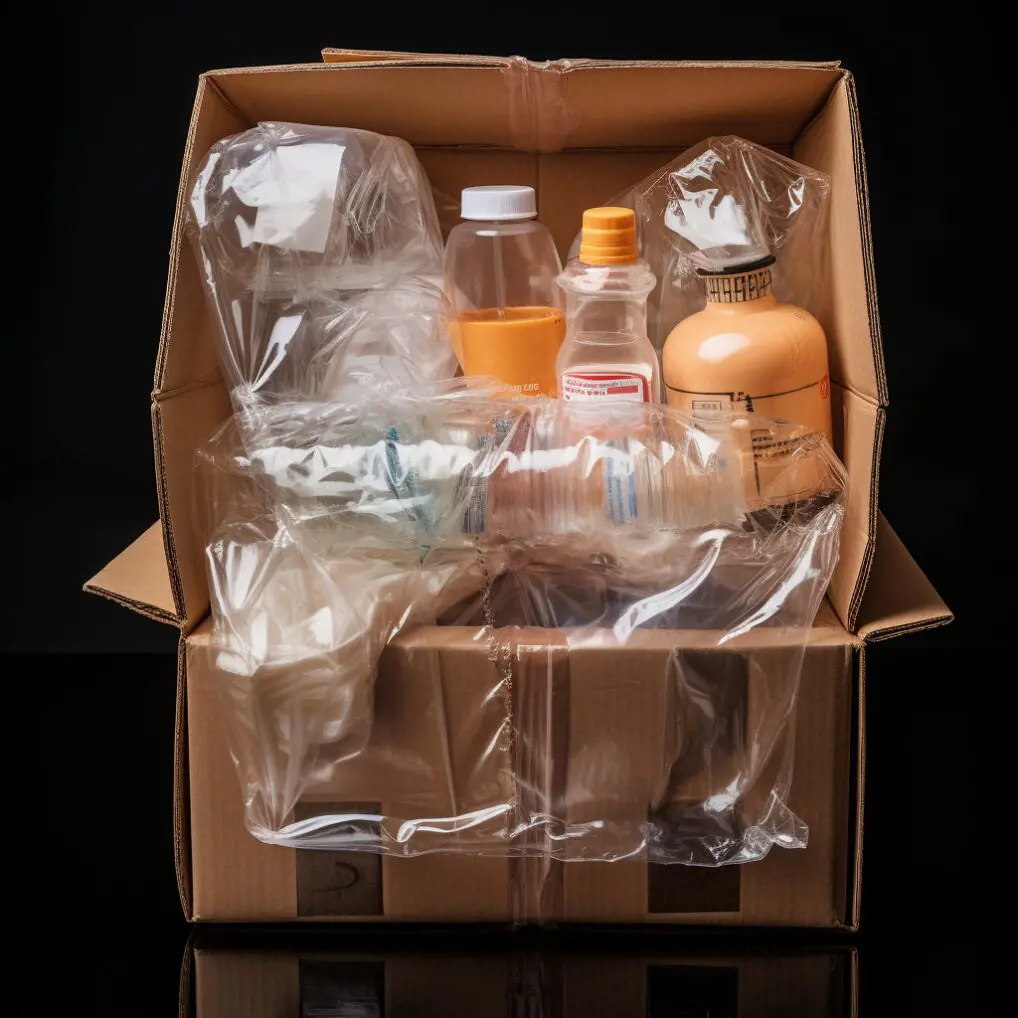
When it comes to packing fragile items securely, there are several top brands and products that are highly recommended. These brands have proven to be reliable and effective in protecting delicate items during transportation. Whether you are moving or shipping fragile items, it's important to invest in quality packing materials to prevent any damage or breakage. Here are some of the top brands and products that experts and experienced individuals often recommend for packing fragile items securely.
- Bubble wrap: Bubble wrap is a classic and widely-used packing material for fragile items. It consists of small air-filled bubbles that provide cushioning and protection. Bubble wrap is available in various sizes and thicknesses, and it can be easily wrapped around delicate items to create a protective layer. Brands such as Sealed Air Corporation and Uline offer high-quality bubble wrap that is durable and reliable. When using bubble wrap, it's important to ensure that the bubbles are facing towards the item for maximum protection.
- Foam inserts: Foam inserts are specifically designed to fit the shape of delicate items such as electronics, glassware, and artwork. They provide a custom-fit cushioning that helps absorb shock and prevent any movement during transportation. Brands like Instapak, Foam Factory, and UFP Technologies are known for their high-quality foam inserts. These foam inserts can be easily inserted into boxes or containers, offering superior protection and stability.
- Packing peanuts: Packing peanuts are small foam or Styrofoam pellets that are commonly used as a void-fill material. They are lightweight and provide cushioning around fragile items, preventing them from shifting or breaking. Brands like Free-Flow Packaging International and Storopack offer sustainable and eco-friendly packing peanuts that can be reused or recycled. It's important to fill the box with enough packing peanuts to ensure that the fragile item is well-protected and immobilized.
- Corrugated boxes: Corrugated boxes are made from a sturdy and durable material that provides excellent protection for fragile items. They are available in various sizes and strengths, making them suitable for different types of fragile items. Brands like International Paper, Packaging Corporation of America, and Uline are known for their high-quality corrugated boxes. It's important to choose the right size box that allows for proper cushioning around the fragile item. Additionally, reinforcing the sides and corners of the box with packing tape can provide extra strength and protection.
- Packaging tape: A strong and reliable packaging tape is essential for securely sealing the boxes containing fragile items. Brands like 3M, Scotch, and Duck offer packaging tapes that are specifically designed for shipping and moving purposes. It's important to use a tape dispenser to ensure proper and secure sealing of the boxes. Reinforcing the seams and edges of the box with multiple layers of tape can provide added protection.
In addition to using the top brands and products mentioned above, it's crucial to pack fragile items carefully and strategically. Here are some general guidelines to follow:
- Wrap each fragile item individually with bubble wrap or foam inserts.
- Place the wrapped items in a sturdy corrugated box with enough packing peanuts to prevent movement.
- Fill any empty spaces in the box with additional packing material to prevent shifting.
- Seal the box securely with packaging tape, reinforcing the seams and edges.
- Label the box as "fragile" to ensure proper handling.
By using quality packing materials and following proper packing techniques, you can ensure that your fragile items are securely protected during transportation. Investing in these top brands and products will give you peace of mind knowing that your delicate items are well-protected and have a higher chance of reaching their destination intact.
10 Essential Items to Pack for a Week in LA
You may want to see also
Frequently asked questions
The best material to use for packing fragile items is bubble wrap. It provides cushioning and protection for delicate objects.
While newspaper can be used as a packing material, it is not the best option for fragile items. Newspaper does not provide as much cushioning as materials like bubble wrap or packing peanuts.
Yes, packing peanuts are a good option for packing fragile items. They provide cushioning and help absorb shock during transportation.
Yes, old clothes or towels can be used as packing materials for fragile items. They can be wrapped around delicate objects to provide cushioning and protection.
Yes, there are alternative packing materials available for fragile items. Some eco-friendly options include biodegradable bubble wrap made from recycled materials, shredded paper, or air pillows made from recycled plastic. These alternative materials can provide cushioning while also being more environmentally friendly.







